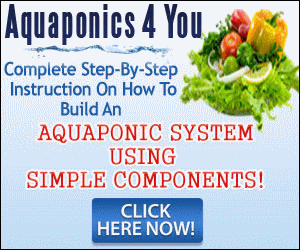

 www.pinterest.com
www.pinterest.com Opening: The Magic of Aquaponics Lesson Plans
Dive into the fascinating world of aquaponics with DIY lesson plans! Aquaponics, a synergistic combination of aquaculture (raising aquatic animals) and hydroponics (growing plants without soil), offers a sustainable and educational way to grow your own food. This guide will take you through the steps to create your own DIY aquaponics lesson plan, perfect for classrooms, homeschool settings, or even personal learning. We'll break down the core components and provide a template for developing an engaging and informative lesson.
Step 1: Defining Your Learning Objectives
Before diving into the technical aspects, clarify what you want your students (or yourself) to learn. What are the key takeaways? Identify the main components of an aquaponics system Explain the nitrogen cycle and its role in aquaponics Understand the benefits of sustainable food production Demonstrate how to build and maintain a small-scale aquaponics system Consider the age group and prior knowledge of your audience when setting objectives.
Step 2: Choosing the Right Aquaponics System
Several aquaponics system designs exist, each with its pros and cons. For a DIY lesson plan, a simple and easily replicable system is ideal. Consider these options: Deep Water Culture (DWC): Plants' roots are suspended in nutrient-rich water. Simplest for small setups. Media Beds: Plants grow in a media like gravel or clay pebbles, which also filter the water. Nutrient Film Technique (NFT): Water flows in a thin film over the roots. Requires more precise water flow. For beginners, a small DWC or media bed system is recommended due to its ease of construction and maintenance. Your lesson plan should clearly explain the chosen system's functionality.
Step 3: Gathering Materials for Your DIY System
List all the materials needed for building the chosen aquaponics system. Be specific about sizes and quantities. A sample list for a small DWC system: Fish Tank (10-20 gallons): The larger the tank, the more stable the system. Air Pump and Air Stone: To oxygenate the water for the fish. Grow Bed/Container: A container to hold the plants above the water. Net Pots: To hold the plants in the grow bed. Clay Pebbles or Rockwool: Growing medium for the net pots. Water Pump (small submersible): To circulate the water. PVC Pipe and Fittings: For plumbing the system. Fish: Goldfish or small Tilapia are common choices. Be aware of local regulations. Plants: Lettuce, herbs, or leafy greens are good starting choices. Water Testing Kit: To monitor pH, ammonia, nitrite, and nitrate levels. Include sourcing information (where to buy each item) and estimated costs in your lesson plan.
Step 4: Step-by-Step Building Instructions
Provide clear, concise, and illustrated instructions on how to build the aquaponics system. Step 1: Prepare the Fish Tank: Clean the tank thoroughly and dechlorinate the water. Step 2: Set up the Air Pump: Place the air stone in the tank and connect it to the air pump. Step 3: Assemble the Grow Bed: Place the grow bed above the fish tank, ensuring it is stable. Step 4: Connect the Water Pump: Place the water pump in the fish tank and connect it to the grow bed using PVC pipe. Step 5: Plant the Seedlings: Place the seedlings in net pots with growing medium and position them in the grow bed. Step 6: Add the Fish: Acclimate the fish to the tank water before releasing them. Include photos or diagrams for each step to make it easier to follow.
Step 5: Explaining the Nitrogen Cycle
A crucial aspect of aquaponics is the nitrogen cycle. Dedicate a section to explaining how it works. Ammonia Production: Fish waste produces ammonia, which is toxic to fish and plants. Nitrification: Beneficial bacteria convert ammonia into nitrites, which are also toxic. Nitrate Conversion: Other bacteria convert nitrites into nitrates, which are a plant fertilizer. Plant Uptake: Plants absorb the nitrates, cleaning the water and promoting growth. Use visuals (diagrams, flowcharts) to illustrate the nitrogen cycle. Explain the importance of maintaining a balanced ecosystem.
Step 6: Monitoring and Maintenance
Explain how to monitor and maintain the aquaponics system. Water Testing: Regularly test pH, ammonia, nitrite, and nitrate levels. pH Adjustment: Adjust pH as needed using pH up or down solutions. Water Changes: Perform partial water changes to remove excess nutrients and maintain water quality. Feeding the Fish: Feed the fish a balanced diet. Plant Care: Provide adequate light and nutrients for the plants. Pest Control: Implement organic pest control methods. Provide a troubleshooting guide for common problems, such as algae blooms, fish diseases, and nutrient deficiencies.
Step 7: Assessment and Activities
Include assessment methods to gauge student learning. Quizzes: Test knowledge of key concepts. Lab Reports: Document observations and data from the aquaponics system. Presentations: Share findings and insights with the class. Hands-on Activities: Building and maintaining the system itself. Examples of activities could include designing a system expansion, calculating nutrient requirements, or researching different fish and plant species.
Step 8: Conclusion: Sustainable Learning with Aquaponics
Summarize the key learning points and emphasize the benefits of aquaponics. Highlight the importance of sustainable food production and the role that aquaponics can play in addressing global food security challenges. Encourage further exploration and experimentation with aquaponics. By providing clear instructions, engaging activities, and a solid understanding of the underlying principles, your DIY aquaponics lesson plan can inspire a new generation of sustainable food producers.
Aquaponics In Cannabis: Sustainable Cultivation Explained
 nueracannabis.com
nueracannabis.com Recycle And Grow With Aquaponics
 www.pinterest.com
www.pinterest.com How To Make Aquaponics System
 circuitdbseriatim.z13.web.core.windows.net
circuitdbseriatim.z13.web.core.windows.net
